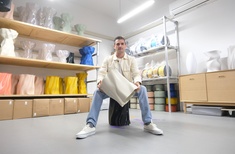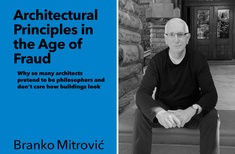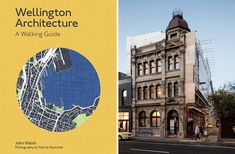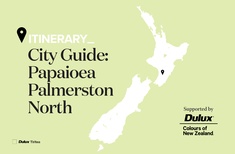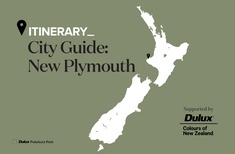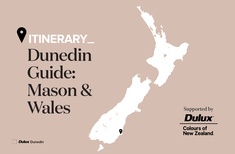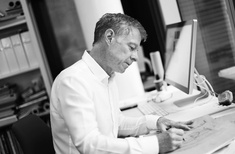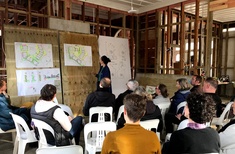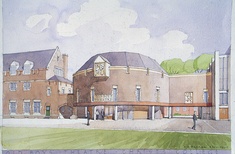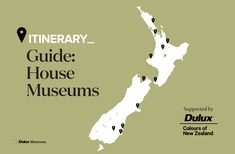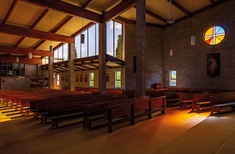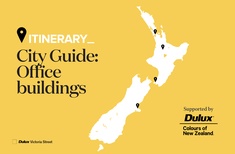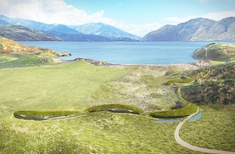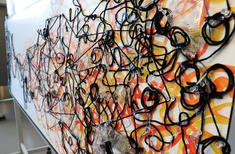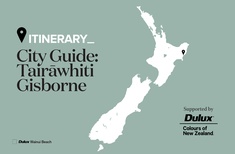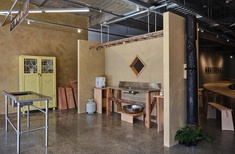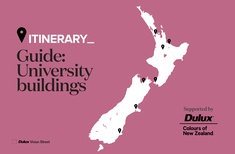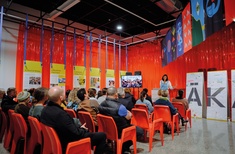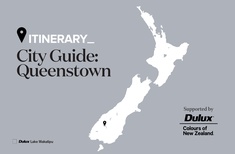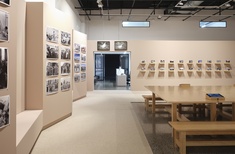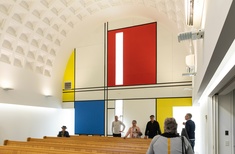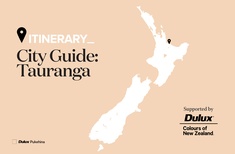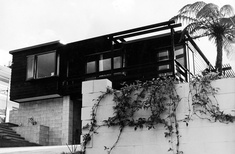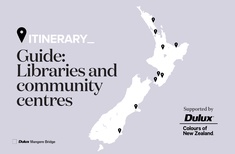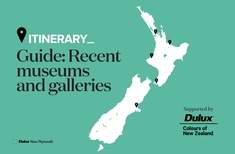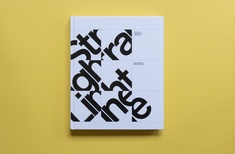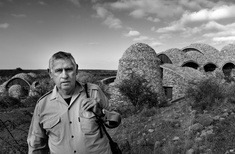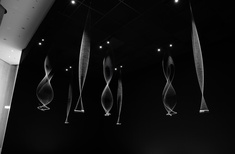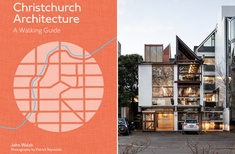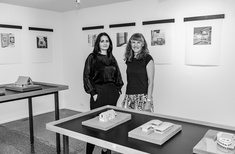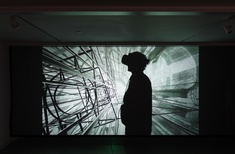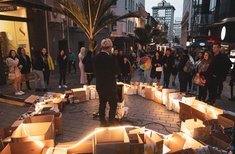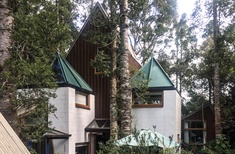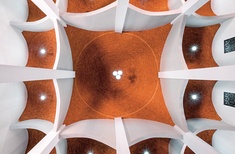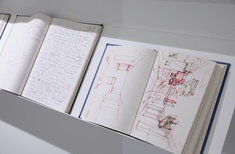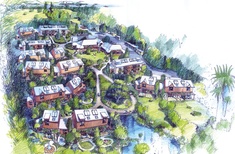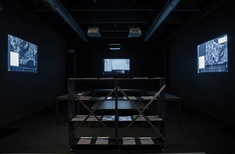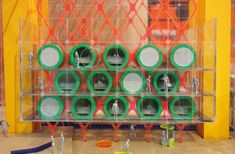Review
RSSBec Snelling of Snelling Studio (formerly Douglas and Bec) reveals the inspiration and processes behind their latest lighting collection — Lens.
Behind the Object: Lulu Stool. Jacinda Rogers talks to Matt Watkins of Special Studio to discover the process behind the creation of their newest 3D-printed creation, the Lulu Stool.
Mike Austin reviews Architectural Principles in the Age of Fraud: Why so many architects pretend to be philosophers and don’t care how buildings look by Branko Mitrović.
John Walsh and Patrick Reynolds’ have published their new walking guide to 120 of Wellington’s most interesting buildings.
In this month’s Itinerary, supported by Dulux Colours of New Zealand, Andrew Barrie and Julia Gatley explore the provincial architecture of Papaioea Palmerston North.
Due to both its early prominence and ongoing wealth, New Plymouth is unlike many other provincial New Zealand cities in that its townscape was made largely by architects who lived there.
With its origins in the practice formed by William Mason (1810–1897) in Dunedin in 1862, Mason & Wales is New Zealand’s oldest architectural practice.
Chris Barton finds Truth and Lies in Architecture to be “both confronting and inspiring in its scope, capturing perfectly the enormity and terror of the architect’s task”
Community-led alternative development models offer solutions to some of the biggest problems that Aotearoa’s citizens are facing today, including limited diversity of housing choices, affordability and increased social isolation.
Pip Cheshire finds Sir Miles Warren and Alec Bruce’s collection of architectural drawings, accompanied by “erudite commentary and fine observations”, also tells a story of the evolution of drawing.
In this month’s Itinerary, supported by Dulux Colours of New Zealand, Sebastian Clarke visits New Zealand’s house museums: those places committed to the memory and presentation of bygone New Zealand spaces for living.
Lynda Simmons finds a successful reframing of the works of already well-published artists Colin McCahon and Paul Dibble and architect Jim Hackshaw.
In this month’s Itinerary, Andrew Barrie and Julia Gatley chronicle tall towers and workspaces that populate our most populous cities.
Kengo Kuma and local surrogates Rough and Milne mastermind “hummocky” design for Peter Thiel’s proposed luxury lodge on the shores of Lake Wānaka.
Kyle Martin discusses this annual student competition, where 12 teams from across the country gathered with one day to design for a mystery brief.
Julia Gatley takes us around locations of architectural significance and interest in the region she grew up in – the country’s eastern port – for this month’s Itinerary.
Lana Lopesi looks at this exhibition, which ran at Artspace Aotearoa from 29 May – 07 August 2021, and “explores kai rituals, notions of space, sovereignty and mapping, and New Zealand’s role in Indigenous dispossession of others.”
For your Itinerary this month, Andrew Barrie and Julia Gatley look at educational buildings across the country from Dunedin to Hamilton and Auckland.
Sean Flanagan says: “Co-edited by Mike Davis (University of Auckland) and Kathy Waghorn (AUT), [this title] is a bright, new publication that seeks to conceptualise architectural work.
We travel to Otago to compile this month’s Itinerary, supported by Dulux: a region rich with projects taking architectural risks and leaning on the landscape for inspiration.
Paul Simei-Barton looks at this collaboration from photographer John Miller and architectural designer Elisapeta Heta, which ran at Objectspace from 9 March to 30 May 2021.
Fritha Powell took to her bike to visit as many architectural projects as she could when the city of Christchurch opened its doors to the public in mid-May.
In this month’s Itinerary, we visit places of architectural intrigue in this rapidly growing North Island beach town. Works from big-city firms and local talent alike feature on our list of stops.
This was an afternoon organised by a group of architects that has met regularly since 1991 as a celebration of one of Group Architects’ founder Bill Wilson’s innovative houses, the Vennell House.
For this month’s Itinerary, supported by Dulux, Andrew Barrie and Julia Gatley take us to one of New Zealand’s first types of essential public buildings: libraries and community centres around the country.
Pip Cheshire explores this book, which offers 40 essays that explore the relationship of Māori with land and its critical role in Māori identity.
In our Itinerary series, supported by Dulux, Andrew Barrie and Julia Gatley plan trips full of architectural discovery. This month: A nation-wide tour of architecture to house art.
Abigail Hurst looks at this photographic portrayal of Christchurch modernism by Mary Gaudin and Matthew Arnold.
Jeremy Smith reads The Architecture of Peter Rich: Conversations with Africa and finds a conversation we can all learn from.
Len Lye curator at the Govett-Brewster, Paul Brobbel, looks at the acclaimed artist’s ongoing influence more than four decades after his death.
Abigail Hurst reviews this book from John Walsh and Patrick Reynolds and finds a guide “for any wanderer of Christchurch, whether familiar or unfamiliar with the streets.”
Marian Macken recounts her experience of this exhibition from South Pacific Architecture’s Megan Rule and Julie Wilson, which ran at Objectspace from 31 October – 5 November 2020.
Simon Twose visits this exhibition that explores the oft-fraught relationship of drawing to practice, which runs at Toi Moroki (CoCA) in Christchurch until 20 February 2021.
Gina Hochstein discusses this architectural urban activation, which took place on Auckland’s O’Connell Street on 13 October 2020.
David Turner reviews this delve into mid-century Auckland houses and finds a book that is “uncomplicated in its purpose, content and structure, beautiful to look at, and short”.
Min Hall finds this substantial book on one of the most extensively used building materials in the world an inspiration for architects looking to combat climate change.
Marian Macken visits the Chartwell Gallery at Objectspace and finds an exhibition in appreciation of the physical artefact.
Abigail Hurst finds Robin Allison’s thought-provoking account of her life and the design and construction of the Earthsong eco-neighbourhood a frank and informative read.
Rebecca Kiddle visits Violent Legalities at Wellington’s Te Pātaka Toi/Adam Art Gallery and finds a controversial exhibition that is part art, part research.
Maito Akiyama explores the ‘new normal’ – how COVID-19 has disrupted daily rituals and activities, vastly changing spatial experience.


